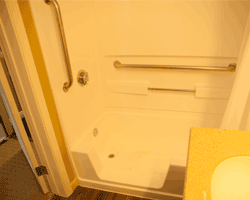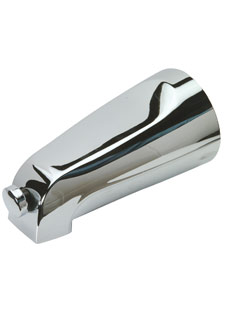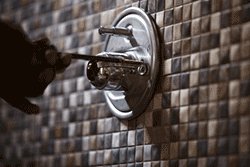Bathroom Tub & Shower Surroundings Buying Guide
Planning your tub or shower and its surrounding area needs careful attention. The wall area around your tub or shower should be covered with a waterproof material, as well as the tub or shower surround.
How to Measure for a Tub & Shower Surround
First, you need to know the dimensions of your space and your tub. Start by measuring from the top of the tub to the ceiling, and decide how tall your surround will be. Tub surrounds can go all the way to the ceiling, but that is not recommended unless there is proper ventilation. The minimum height for a tub surround is typically 72 inches, and should extend at least 3" above the showerhead rough in.
Tub & Shower Surround Types

Tub and shower surround can be tile, plastic, or marble/stone.
- Tile surrounds can be colorful and stylish, and give an upscale look to your bathroom even on a budget. Tile can also be challenging to install and maintain. If not sealed and grouted properly, you will have water damage.
- Surround kits come with the precut and measured pieces you need to install a waterproof surround. They are available in different materials, textures, and colors. Typically tub surround kits are made of ABS plastic, PVC, fiberglass, or acrylic. These are good at repelling water and can be simple to install.
- Marble/stone surrounds are luxurious and durable. They can also be expensive and difficult to install since the pieces are heavy and must be handled with care.

Tub Spouts & Fillers
The type of tub you have installed will determine the type of tub faucet or spout you need.
Most apartments and residential bathrooms have tub/shower combos with both a tub spout or tub filler, a valve trim kit, and wall-mounted showerhead. Typically water is controlled by one or two handles with a diverter that changes the water flow from tub to shower. Diverters can be levers, knobs, buttons, or other switches that activate the showerhead. If you currently have a two/three handle valve set, we would recommend upgrading the valve & trim to a pressure balance one handle valve set at the earliest opportunity. This will reduce the potential that your customers could be accidentally scalded.
If you have a tub tub that is separate from your shower enclosure, such as soaking tub or a claw-foot tub, your tub faucet and spout will require a different configuration. You may need a deck mount or floor mount tub faucet. Deck mount tub faucets are installed on the rim of your tub or on a surrounding tiled deck. Floor mount faucets are installed outside the tub with exposed pipes coming up through the floor, and are attached to the tub or wall for support.
Besides mounting type, you will also want to consider finish such as chrome, nickel, and bronze. Opening price point shower heads and tub spouts are often plastic or die-cast zinc, for a product that can withstand the test of time, choose a cast brass product solution.
Tub Trim Kits & Valves

If you are installing or replacing a tub spout or faucet, you want to be sure your trim kit and valves are compatible. The term "trim" refers only the spout and handles of your faucet—any part that is visible. Valves are hidden behind the wall and connect the water lines.
Trim kits and valves are sometimes sold separately. Typically, valves and trim kits from different brands are not interchangeable. It is important that you choose valves and trims from the same manufacturer to get the best match. Also, be sure you know what type of valve you need. Not all trims fit all valves even if they are the same brand. You may need to open up the wall to replace the valve and ensure compatibility.
Common Types of Tub Valves:
- Pressure balancing valve—used with single handle faucets, to adjust flow and temperature and reduce likelihood of scalding
- Thermostat valves—allows for better control over water temperature
